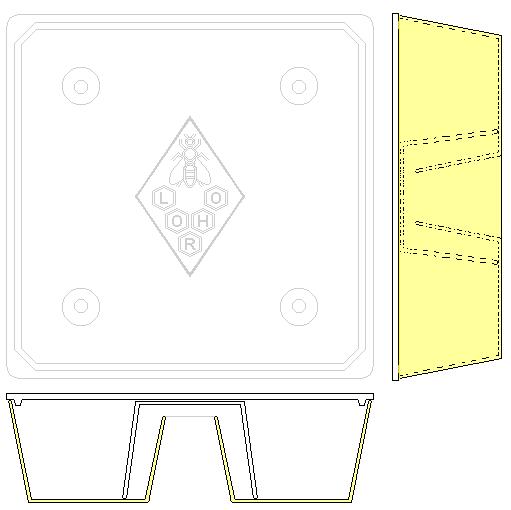
|
The drawings on the left indicate the principle of all rapid feeders. There is a tray with a tube or channel for the bees to access the syrup. They are prevented from drowning by the use of some sort of cover, that allows the syrup to seep through as the bees take it, but doesn't allow the bees access to all the syrup.
There are several shapes and sizes including round, square and rectangular. The smaller ones are now usually made from plastic, but before that it was tinplate or aluminium. The larger ones that fit over the brood box are usually made from wood. These include the Miller and Ashforth types. In recent years there have been some large plastic rapid feeders come on the market. I think they are quite good, but in my experience you need to be careful when handling them full of syrup. They are not very rigid and it is easy to spill syrup.
I think the smaller feeders are good for the ordinary amateur beekeeper. They can be filled up at dusk with no need to wear protective clothing. The feed can be given over a lengthy period, so the queen can start laying without being crowded out, as can happen when the larger feeders are used.
In some cases, the feeder may need to be placed inside an eke or empty super, to avoid the roof resting on it and possibly blowing off in the wind.
When the feeding is complete, simply remove the inner cover and allow the bees to clean up the syrup.
|
|---|
